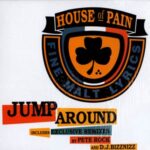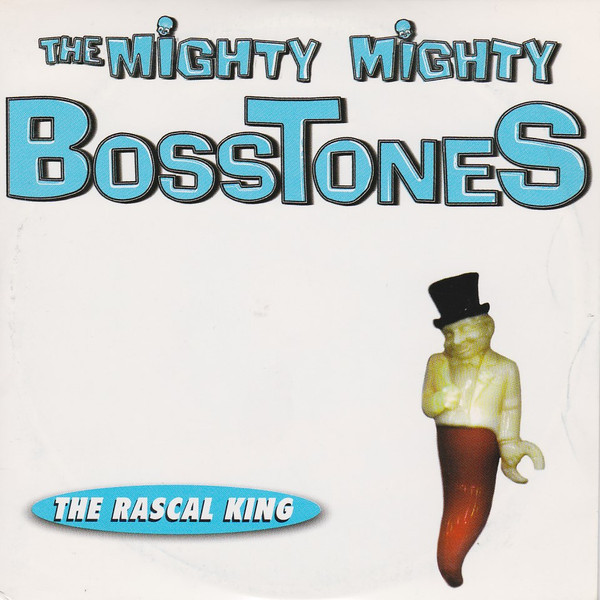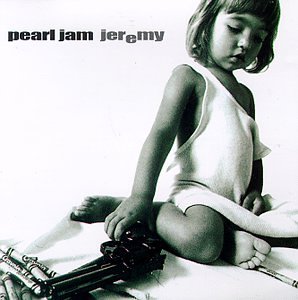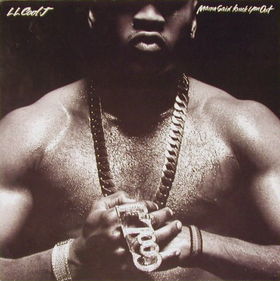 House of Pain’s Jump Around, released in 1992 as the lead single from their self-titled debut album, is one of the most enduring and instantly recognizable tracks in hip-hop history. From its opening horn blast to its infectious rhythm and aggressive vocal delivery, the song commands attention, ignites dance floors, and captures the spirit of 1990s East Coast rap culture. Beyond its immediate energy and party-ready vibe, Jump Around has become a cultural touchstone, representing youthful rebellion, communal celebration, and the raw power of hip-hop as a vehicle for both personal expression and collective identity.
House of Pain’s Jump Around, released in 1992 as the lead single from their self-titled debut album, is one of the most enduring and instantly recognizable tracks in hip-hop history. From its opening horn blast to its infectious rhythm and aggressive vocal delivery, the song commands attention, ignites dance floors, and captures the spirit of 1990s East Coast rap culture. Beyond its immediate energy and party-ready vibe, Jump Around has become a cultural touchstone, representing youthful rebellion, communal celebration, and the raw power of hip-hop as a vehicle for both personal expression and collective identity.
The song’s appeal is multifaceted: its production is ingenious, its lyrical delivery is aggressive yet charismatic, and its impact is felt across generations. Even decades after its release, it remains a staple at sporting events, parties, and public gatherings, illustrating the timelessness of its infectious energy.
House of Pain: The Irish-American Trio
House of Pain, consisting of Everlast (Erik Schrody), DJ Lethal (Leor Dimant), and Danny Boy (Daniel O’Connor), emerged from Los Angeles in the early 1990s with a distinctive sound that blended hardcore hip-hop with elements of rock, funk, and traditional Irish music motifs. The group’s identity was closely tied to Irish-American heritage, visible in their lyrical references, visual imagery, and overall aesthetic.
Jump Around became the defining track for the trio, establishing them as major players in the hip-hop scene while simultaneously appealing to mainstream audiences. Everlast’s gravelly delivery, combined with DJ Lethal’s inventive sampling and Danny Boy’s energetic ad-libs, created a synergy that made Jump Around an unforgettable musical experience.
The Production Genius of “Jump Around”
The production of Jump Around is iconic, thanks largely to the work of DJ Muggs, who crafted the track for the Cypress Hill production team. The song opens with a signature horn sample, which immediately grabs the listener and sets a high-energy tone. This horn, drawn from Bob & Earl’s “Harlem Shuffle” and processed through Muggs’ innovative sampling techniques, provides a bold, brassy hook that defines the track’s identity.
The rhythm section is a masterclass in minimalism and impact. The drum beat is sharp, punchy, and unrelenting, anchoring the song while leaving space for Everlast’s vocal flow. Bass lines are understated but effective, providing depth and groove without overpowering the mix. This combination creates a hypnotic drive that encourages listeners to move physically, making the song an ideal party anthem.
Additional production elements, such as percussive scratches, subtle effects, and vocal layering, enhance the sense of texture and excitement. The track’s arrangement builds anticipation and maintains intensity throughout, demonstrating the careful attention to dynamics and pacing that characterizes some of hip-hop’s most enduring tracks.
Lyrical Content and Delivery
Everlast’s delivery on Jump Around is aggressive, charismatic, and commanding. His voice cuts through the instrumental with clarity, projecting both confidence and a sense of playful menace. The lyrics themselves, while not overtly complex, are memorable, brimming with braggadocio, humor, and cultural references that anchor the song in its early-1990s hip-hop context.
Lines such as “Pack it up, pack it in, let me begin / I came to win, battle me that’s a sin” exemplify the song’s confrontational yet lighthearted tone. Everlast simultaneously asserts dominance, encourages audience participation, and injects a sense of theatricality into the track. The repeated chorus, punctuated by the iconic “Jump!” command, functions as a call-and-response device, drawing listeners into the energy and creating a communal experience that transcends the recording itself.
The lyrics also reflect House of Pain’s unique identity, blending urban bravado with Irish-American cultural motifs and an irreverent sense of humor. This combination distinguishes the song from other hip-hop tracks of the era, giving it a distinctive personality that has contributed to its longevity.
Music Video and Visual Representation
The music video for Jump Around reinforces the song’s explosive energy and theatricality. Set in a gritty urban environment, the video features dynamic performances, crowd interactions, and an emphasis on physical movement, reflecting the song’s imperative to “jump.”
Visual cues, such as graffiti-laden walls, urban landscapes, and high-energy choreography, align the song with its hip-hop roots while also appealing to mainstream audiences. Everlast’s commanding presence, combined with Danny Boy’s charisma and DJ Lethal’s DJing antics, makes the video a perfect visual companion to the track’s infectious sonic energy.
The music video helped propel the song’s popularity on MTV and other music television platforms, contributing to House of Pain’s rapid ascent and cementing Jump Around as a cultural phenomenon.
Chart Performance and Commercial Success
Jump Around achieved significant commercial success upon release, reaching number three on the Billboard Hot 100 in the United States and charting in multiple countries worldwide. Its crossover appeal—bridging hardcore hip-hop credibility and mainstream accessibility—played a major role in its chart performance.
The song’s infectious energy made it a favorite in clubs, radio playlists, and live performances, ensuring that it would remain a staple in popular culture long after its initial release. Its success also paved the way for House of Pain’s debut album, which garnered critical and commercial acclaim and solidified the trio’s place in hip-hop history.
Cultural Impact and Legacy
Over three decades after its release, Jump Around remains a fixture in popular culture. Its influence extends beyond music into sports, film, television, and public events. The track is synonymous with celebration, excitement, and communal energy, frequently played at sporting arenas, parties, and festivals to energize crowds and ignite audience participation.
The song has been sampled, referenced, and covered by numerous artists across genres, illustrating its broad appeal and enduring relevance. Its iconic horn riff, commanding chorus, and rhythmic drive have become part of the collective musical consciousness, instantly recognizable to multiple generations.
Beyond its musical impact, Jump Around embodies the spirit of 1990s hip-hop: irreverent, energetic, and boundary-pushing. It represents a moment in time when hip-hop was both asserting its cultural identity and achieving mainstream visibility, bridging underground credibility with mass appeal.
Live Performances and Audience Interaction
House of Pain’s live performances of Jump Around were legendary for their energy and audience engagement. Concertgoers were often encouraged to literally jump along with the beat, creating a participatory, communal experience that mirrored the track’s imperative.
Everlast’s stage presence, characterized by charisma, aggression, and humor, ensured that the song functioned as both a musical and performative event. DJ Lethal’s turntablism added improvisational flair, while Danny Boy’s ad-libs and crowd interactions amplified the song’s impact. These performances solidified the track’s status as an anthem, demonstrating the unique power of live hip-hop to merge sound, movement, and community energy.
Musical Analysis: Groove, Harmony, and Innovation
From a musical perspective, Jump Around is deceptively sophisticated. The horn sample provides a melodic hook while establishing tonal tension, creating excitement and anticipation. The rhythm section is minimalistic yet potent, demonstrating the power of groove as a primary vehicle for energy and engagement.
DJ Muggs’ production choices—layered percussion, subtle effects, and spatial mixing—enhance the track’s dynamic impact. Bass and drums interact in tight syncopation, propelling the song forward without overwhelming the other elements. The song’s sparse harmonic content allows the rhythmic and melodic motifs to dominate, highlighting the centrality of groove and repetition in creating energy.
Everlast’s vocal phrasing is rhythmic and percussive, functioning almost as an additional instrument within the arrangement. His enunciation, timing, and emphasis contribute to the track’s hypnotic quality, reinforcing its cyclical, irresistible energy.
Influence on Hip-Hop and Popular Culture
Jump Around has had a lasting influence on both hip-hop and broader popular culture. Its fusion of aggressive delivery, catchy hooks, and inventive sampling set a precedent for subsequent artists seeking to balance lyrical credibility with mainstream appeal.
The track’s success demonstrated that hip-hop could dominate commercial charts while maintaining a distinctive, authentic identity. Its influence can be seen in party anthems, stadium rap tracks, and songs designed to energize audiences physically and emotionally.
Beyond music, the song has become emblematic of cultural energy and communal participation. From sports arenas to college parties, Jump Around functions as a signal for movement, excitement, and celebration. Its persistent presence in these contexts underscores the enduring relevance of House of Pain’s creation.
Cross-Generational Appeal
One remarkable aspect of Jump Around is its cross-generational appeal. While rooted in the early-1990s hip-hop scene, its energy, rhythm, and charisma transcend temporal boundaries. Young listeners today encounter the track in movies, commercials, or sporting events, experiencing its vitality firsthand, while older audiences remember it as a defining anthem of their youth.
This cross-generational resonance is a testament to the song’s fundamental qualities: infectious rhythm, memorable hooks, and an energy that cannot be constrained by time. It is a rare example of a track that maintains relevance both as a historical artifact and as an active participant in contemporary cultural life.
Enduring Popularity and Adaptations
The popularity of Jump Around has been reinforced through various adaptations, remixes, and covers. Numerous artists and DJs have reinterpreted the track, integrating it into different musical contexts while retaining its core energy and rhythmic identity. Its horn riff and commanding chorus remain touchstones, instantly recognizable and widely celebrated.
The song’s adaptability underscores its strength as a composition. Whether in hip-hop, electronic dance music, or live band arrangements, Jump Around maintains its capacity to energize audiences and inspire movement, demonstrating the universality of its appeal.
Conclusion: The Power of Unrelenting Energy
House of Pain’s Jump Around is more than a hip-hop track; it is a cultural phenomenon, a musical manifesto of energy, communal celebration, and unrelenting momentum. Its production, lyrical delivery, and iconic horn riff combine to create a song that is both accessible and sophisticated, immediate and enduring.
The track exemplifies the power of hip-hop to capture emotion, identity, and collective energy in a few short minutes. It represents a moment in music history when raw talent, inventive production, and cultural authenticity converged to produce a song that continues to move listeners, decades after its release.
From the Los Angeles streets where House of Pain first recorded it to stadiums and clubs around the world, Jump Around remains an anthem of vitality, an enduring celebration of rhythm, and a reminder of the magnetic force of music that compels listeners to rise, move, and participate. Its infectious energy is eternal, and its influence on music and culture is undeniable. Every time the horn blares and the beat drops, listeners are reminded of the irresistible human urge to jump, to celebrate, and to embrace life with unrestrained vigor.


